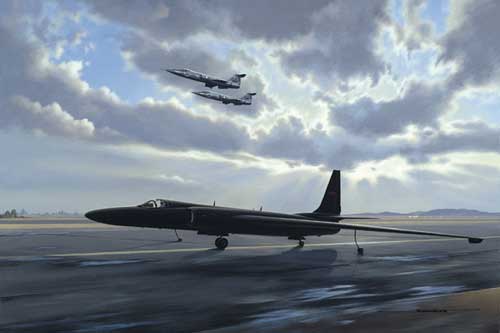  
Ever since the earliest days of flight, military reconnaissance has been a major application for powered aircraft. In the WW I era scouts were utilized in the beginning of the War to report the positions of opposing armies. For most of the last century aircraft utilized in the reconnaissance role were often those that had failed to perform adequately in another role, and became relegated to the reconnaissance mission. However, over time military planners began to see the necessity of aircraft specially designed to excel at spying on opposing forces. Generally this meant an aircraft capable of high altitude, fairly high speed, sufficient range, and enough stability to be an excellent photographic platform. For most of the 1950 and 1960s the US Navy was utilizing Lockheed Neptunes (P2V) for its reconnaissance needs, with the P-3 Orion coming onboard in the early 1960s. The USAF utilized the RB-66 Destroyer with its recon squadrons during the 1950s. One of the most famous of all reconnaissance aircraft is the Lockheed U-2. The U-2 was a special project developed by Lockheed’s famous “Skunk Works” in Burbank, California under the supervision of Mr. Clarence L. Kelly Johnson, one of America’s most important aeronautical designers. The Skunk Works was famous for generating innovative and cost-effective designs, and the U-2 was no exception. The “Utility” designation of this aircraft was provided to hide its real purpose as a spy plane. The U-2 spy plane was an enormous powered glider with a huge wingspan of 80 feet. It had a sailplane-like high aspect ratio 14.3:1 wing and a very lightweight construction. The first U-2s took to the air in 1956 but the government kept the aircraft secret. The U-2 could fly very high (55,000 feet for early models and more than 70,000 feet for later variants,) and had sufficient range (more than 3000 miles for later variants) to take it over many areas of the Soviet Union. It was not particularly fast, and the vulnerability of the U-2 became apparent in May of 1960 when Francis Gary Powers was shot down in a U-2 over the Soviet Union. This embarrassing incident resulted in the public trial of Mr. Powers on espionage charges. He would later be released but unfortunately was killed in a civilian helicopter accident many years later. The U-2 proved its worth in 1962 when it brought back the first photos of Soviet missile sites in Cuba. Maj. Richard S Yeser piloted the U-2 over Cuba that brought back these first photos. He was killed on a similar mission eight days later. Lockheed would later develop the super-fast SR-71 Blackbird, capable of out running most anti-aircraft missiles.
Giclee Edition Size 100
|